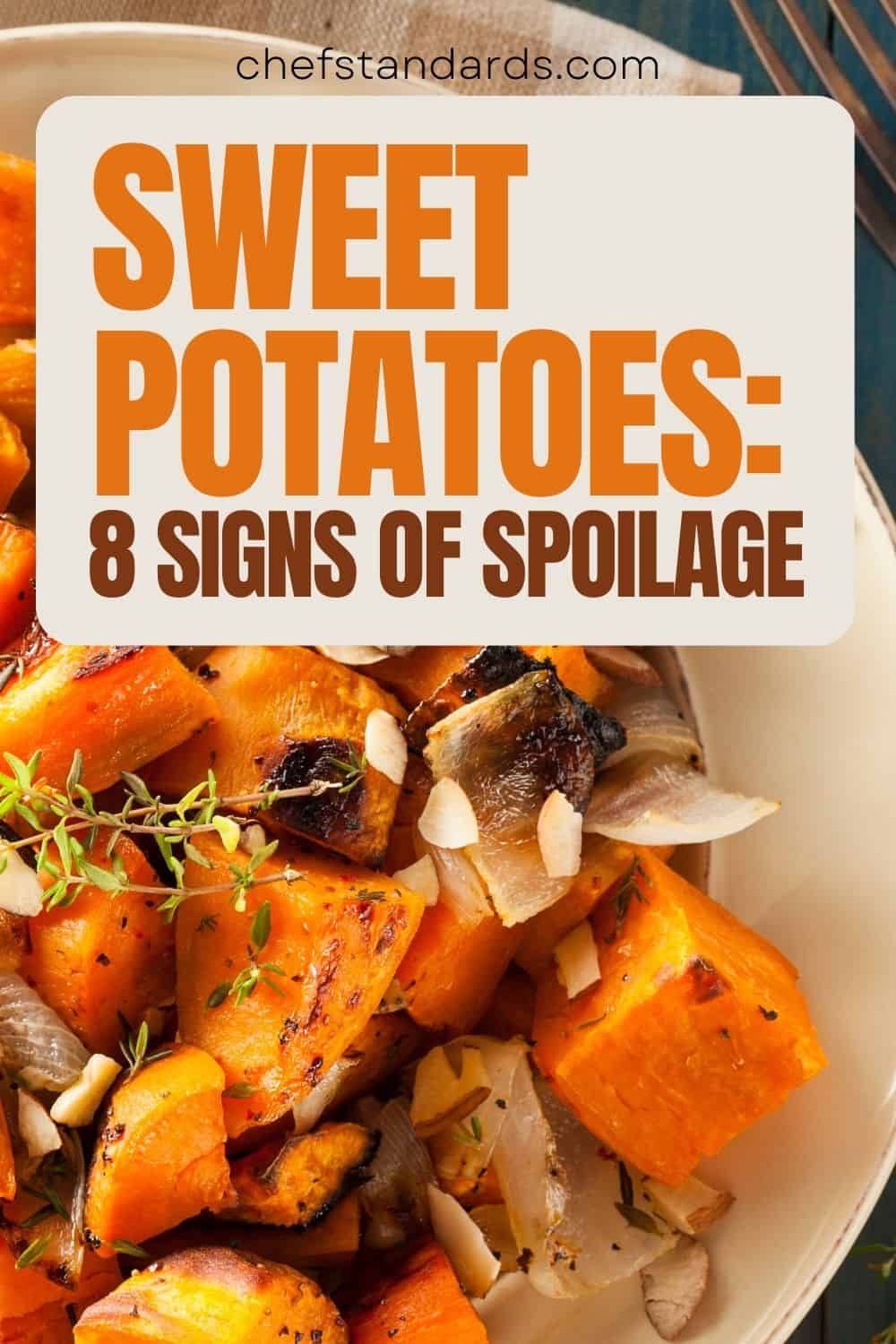Whenever I keep sweet potatoes in a pantry for some time, I enter an overthinking mode because it’s so hard to decipher whether they are spoiled or just look like that. I don’t have such a problem with regular potatoes because the signs of spoilage are easier to detect.
Does this sound familiar to you, dear reader? Given that I’m a person who doesn’t like to leave anything to chance, I did my research on how to tell if a sweet potato is bad. Guess what?
The holes on the surface and sprouting aren’t considered signs of spoilage when it comes to sweet potatoes. However, if you notice that your sweet potato is suspiciously soft or it has darkened flesh, these are surefire signs that it’s gone bad.
I’ll cover more signs of sweet potato spoilage below. Also, I’ll share with you some genius storage tips that will increase the shelf life of your sweet potatoes.
Ready when you are!
5 Surefire Signs Sweet Potato Has Gone Bad
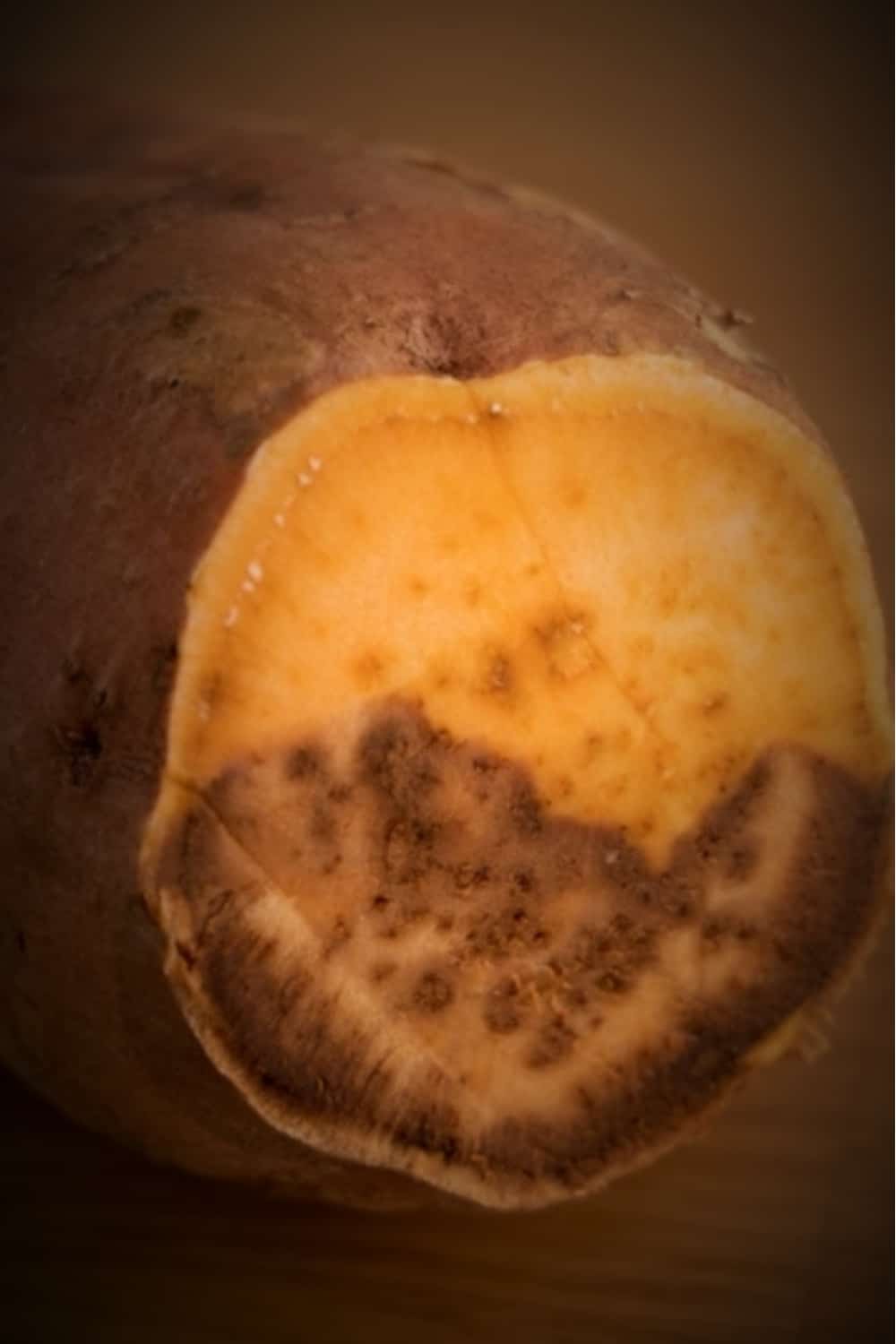
From soft and mushy texture to a bunch of sprouts, here are the surefire signs your sweet potato is spoiled:
1. Soft and mushy texture
Soft and mushy sweet potatoes that look wrinkly due to water loss are 100% spoiled. However, not all hope is lost.
If half of your sweet potato is wrinkled and soft and the other half looks intact, then you can cut “the spoiled half” and use the rest. If the majority of sweet potato looks wrinkly and spoiled, then it’s best to toss it away.
2. Darkened flesh
When sweet potatoes lose water, they don’t only become wrinkled but their flesh darkens as well. In other words, if you notice darkened flesh inside your sweet potato, it means it’s spoiled.
Again, you don’t need to discard the whole potato if half of it isn’t discolored. You can only cut off the discolored part and use the rest.
3. Mold
Another sign that sweet potato has gone bad is moldy appearance. Moldy areas usually appear beneath or on the cracks in the skin of sweet potatoes. They can be green, white, or black in color.
If you notice any signs of mold, it’s not safe to cut off the moldy area and use the rest. Why? Because you cannot know for sure how much of your sweet potato is infected with mold. For that reason, it’s best to toss the whole potato.
Pro tip: Do the same if you notice mold on other root vegetables like ginger because that is a surefire sign your ginger has gone bad.
4. An off-smell or taste
Does your sweet potato taste sour or has a sour, off smell? If yes, then it’s spoiled and it’s not safe to consume it.
Fresh sweet potato is odorless. So, if a sweet potato has an off smell, this means it has been exposed to bacteria for too long and has started to rot from the inside out.
5. A bunch of sprouts
If you notice that your sweet potato has grown a bunch of long sprouts (roots), you should toss it. However, if the sprouts are still small, then it just means your sweet potato is no longer fresh and you should consume it ASAP before it becomes spoiled.
4 Concerning Signs That Usually Don’t Indicate Spoilage
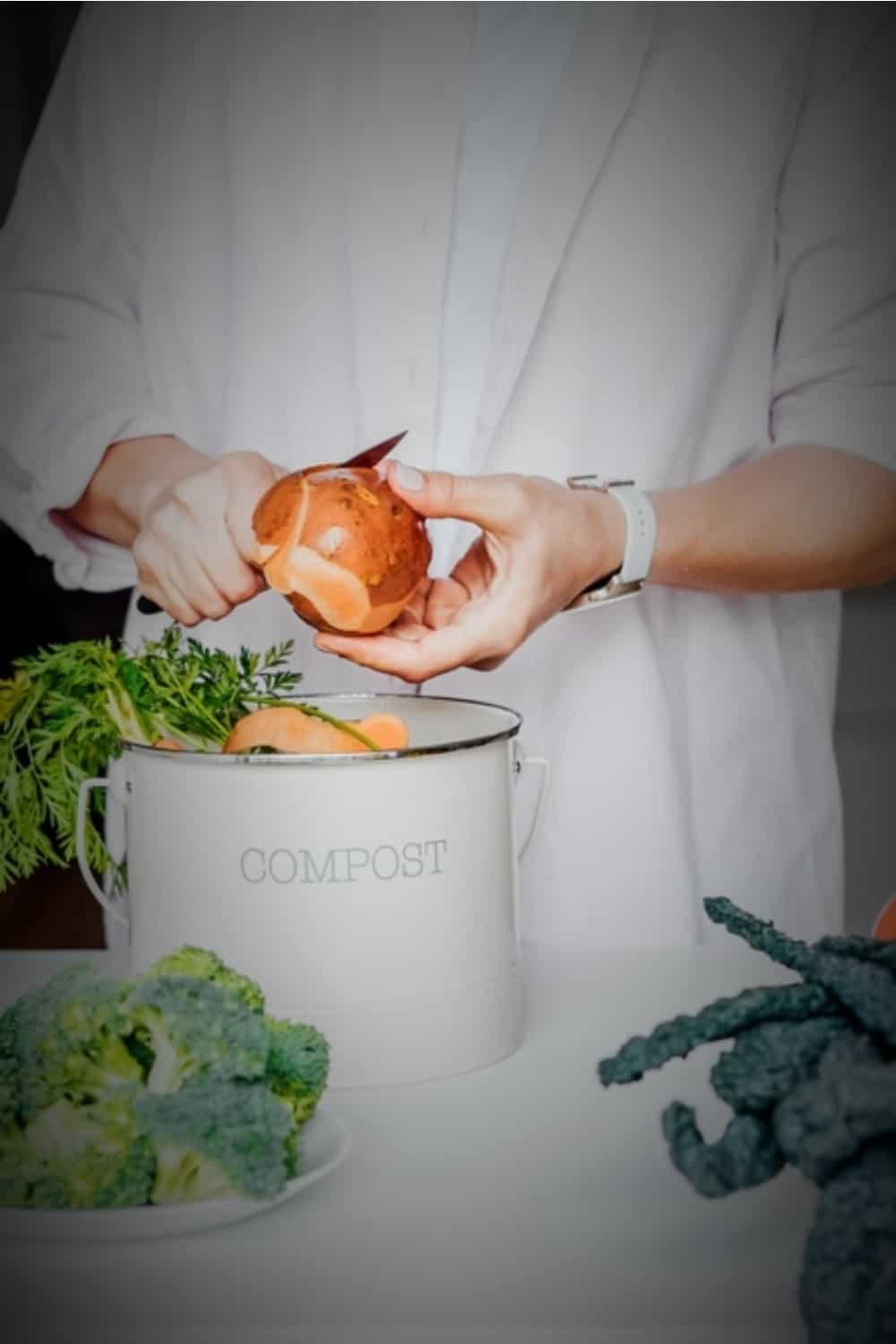
As I already mentioned in the introductory paragraph, sometimes it can be really hard to decipher whether a sweet potato is spoiled or not because of its unique appearance. That being said, here are the most common concerning signs that don’t mean your sweet potato has gone bad:
1. White liquid
Have you ever noticed white liquid appearing when you cut a sweet potato? Well, this doesn’t mean the potato is spoiled. Sweet potatoes contain sugar and starch and that’s why ooze white liquid when you cut them.
2. A couple of holes inside the sweet potato
These holes are also known as spongy or pithy and they don’t indicate spoilage. Holes inside the sweet potato happen when you keep it stored at higher temperatures for a longer time.
A couple of holes are okay, but if you notice a bunch of holes then it’s best to throw the potato away. You shouldn’t do that for safety reasons but because the taste of your sweet potato would be altered (read: it wouldn’t taste good).
3. Holes on the surface of sweet potato
If you store sweet potatoes for more than a few weeks, you’ll notice that they have developed holes on the outside. Again, this doesn’t mean that they are spoiled.
You can remove the holes by cutting them off and use the potato as you normally would. The best of all is that these holes are really small, so you won’t waste much of your sweet potato skin.
Did you know that potato skin is edible, too? Well, it is not edible in this case (read: when it’s covered with holes or has mold).
4. A couple of small sprouts
If you notice a few small sprouts on your sweet potato, it is still edible. It just means that it’s no longer fresh as it used to be.
You shouldn’t throw the potato away just because of a few sprouts, but you should definitely consume it as soon as possible before it goes bad. Just cut off the sprouts and enjoy your sweet potato!
How Long Do Sweet Potatoes Last?
This depends on whether the sweet potato is cooked, peeled, or cut, and where it is stored. You can keep sweet potatoes at room temperature, in the refrigerator, or in the freezer. Let’s see the shelf life of each storing method as shown in the table below:
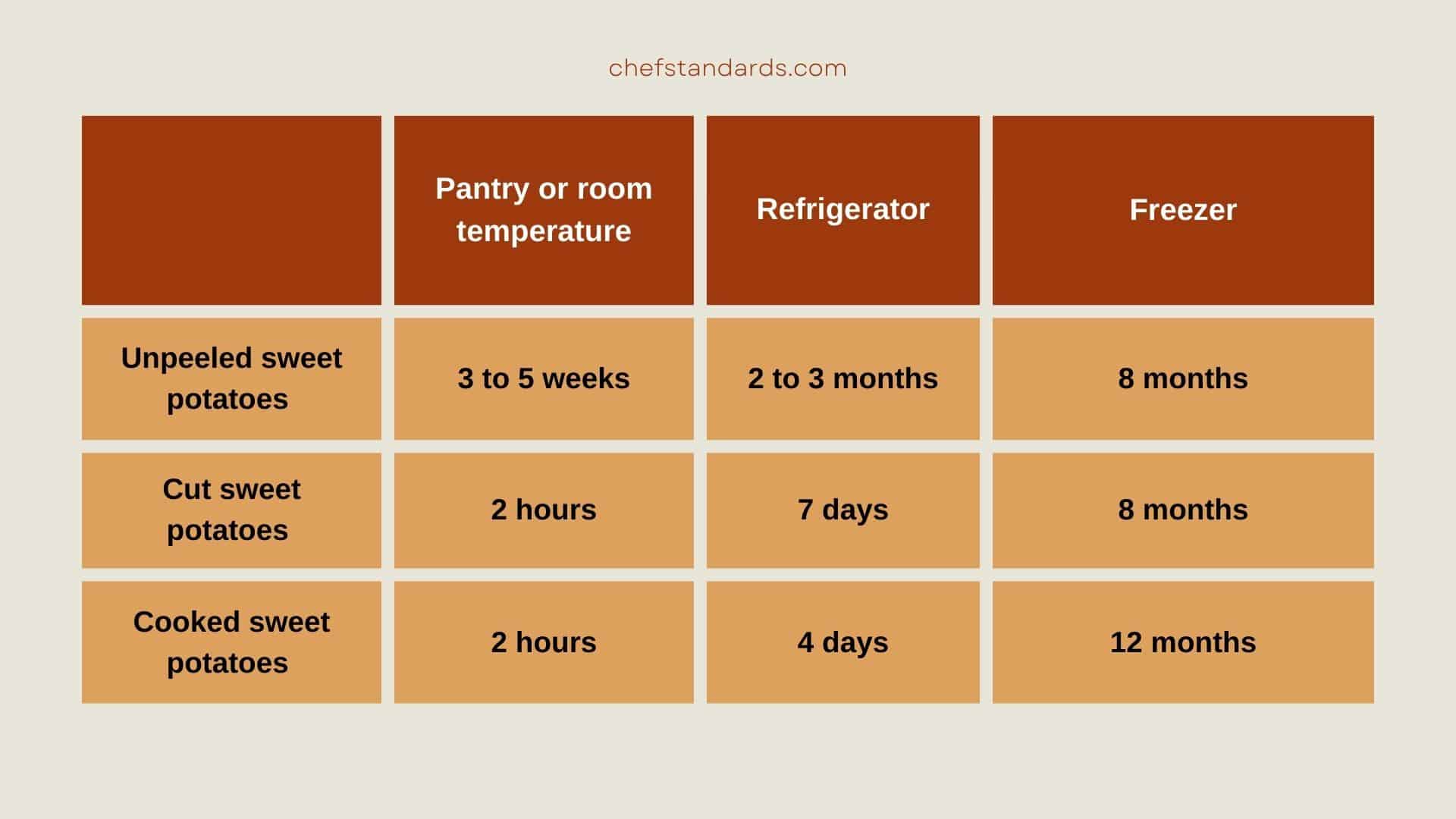
NOTE: The USDA recommends the following: “Within 2 hours of cooking food or after it is removed from an appliance keeping it warm, leftovers must be refrigerated. Throw away all perishable foods that have been left at room temperature for more than 2 hours.”
10 Tips For Storing Sweet Potatoes So They Last Longer
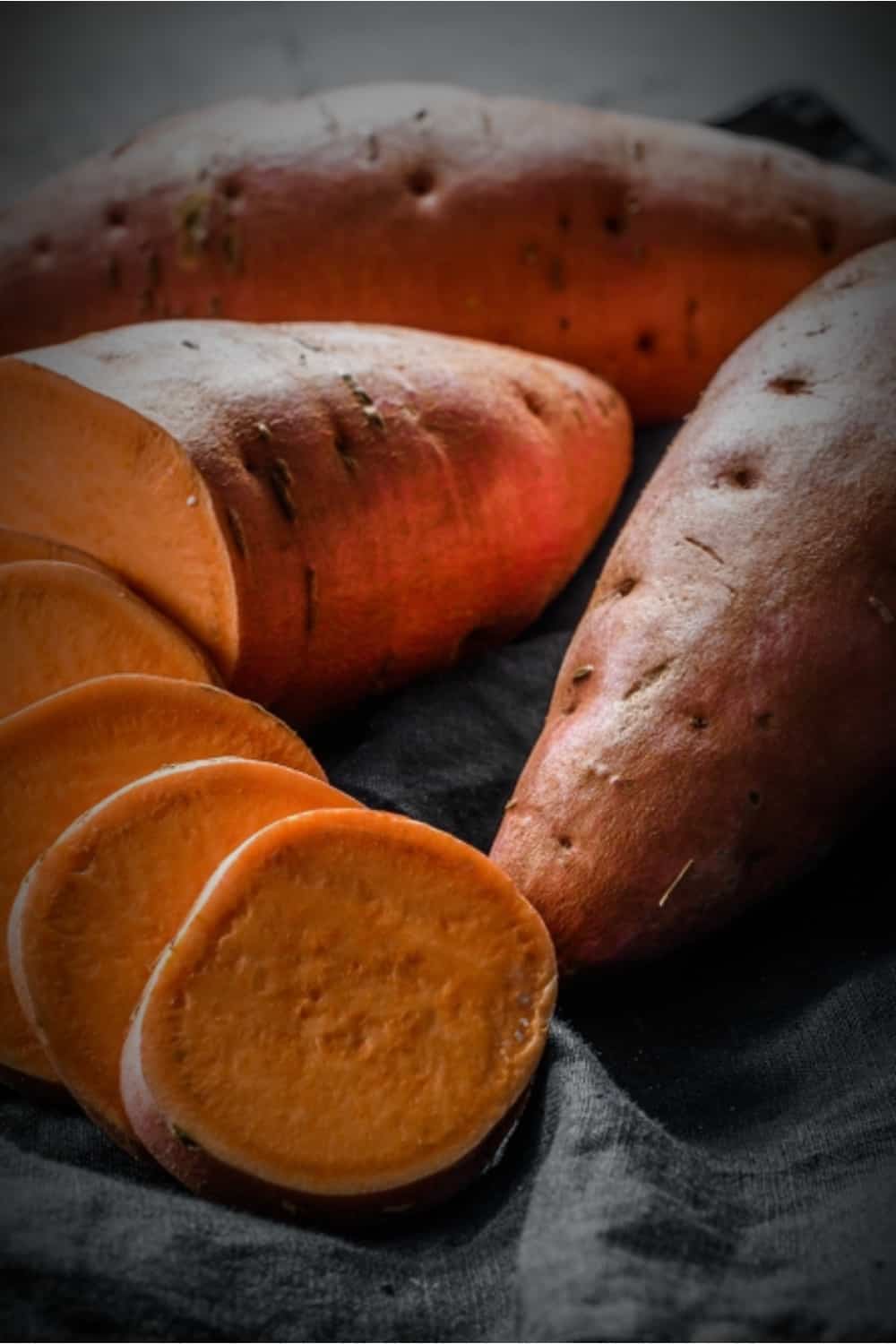
You can check the signs of spoilage of sweet potato, but do you know what’s even better? Learning all tips and tricks regarding storing sweet potatoes because this will help you prevent spoilage. If you want to extend the shelf life of your sweet potatoes, then do the following:
1. Keep the sweet potatoes away from light: Exposure to light can accelerate the spoilage of sweet potatoes, so keep them away from light.
2. Don’t wash sweet potatoes before storing them: Instead, you should brush off the dirt of sweet potatoes. Washing them would increase mold appearance.
3. Fridge is a great storage option: Storing sweet potatoes in the refrigerator or in a cool, dark place will preserve their freshness for a long time. Use your refrigerator vegetable section for a longer shelf life.
4. Don’t keep them too long in the fridge: Sweet potatoes can develop a soft texture and moisture spots if you keep them in the fridge for more than a few weeks.
5. The ideal storage temperature for sweet potatoes is between 55° and 60°F: Storing sweet potatoes a few degrees below room temperature will prolong their shelf life.
6. Cold cupboard is also an option: Use cold cupboards or storage rooms to keep your sweet potatoes at a cool temperature in a resealable bag or mesh bag for food storage.
7. Keep sweet potatoes away from bananas: Keeping sweet potatoes next to bananas will make your potatoes ripen quickly which will decrease their shelf life. The same applies to other vegetables and fruits such as garlic and apples.
8. Use an airtight container: Of course, it is best to store your sweet potatoes in an airtight container in the fridge, which will extend their shelf life. You can also use plastic bags for peeled sweet potatoes.
9. Discard any sweet potatoes that are spoiled: Throw away any sweet potato that is moldy or has a bunch of sprouts (read the signs of spoilage above). If you keep spoiled potatoes next to healthy potatoes, you’ll end up dealing with a bunch of spoiled potatoes that could have been saved.
10. Layer sweet potatoes evenly: In other words, don’t put too many sweet potatoes in one basket. This will prevent or minimize the spreading of bacteria among sweet potatoes.
Can You Get Sick From Eating A Bad Sweet Potato?
Okay, let’s say that you ate a spoiled sweet potato because you couldn’t determine whether it was bad or not. Or because you didn’t want to discard a bad sweet potato even though you knew it was spoiled. Speaking from experience.
In that case, you may experience nausea and stomach problems such as vomiting and diarrhea. In some severe cases, people also experience fever and abdominal pain.
If you eat a spoiled sweet potato, you can wait for a day or two for your stomach to recover. If it doesn’t, then it’s best to see your doctor. Well, you can visit your doctor right away if your food poisoning symptoms are severe.
Final Thoughts
If your sweet potatoes look and smell unusual, then they’re likely spoiled and you shouldn’t risk consuming them. If you aren’t sure whether your sweet potatoes are spoiled or not, then you shouldn’t eat them.
The last thing you need is to deal with food poisoning symptoms such as vomiting and diarrhea, right? Trust me, I’ve learned that the hard way.
